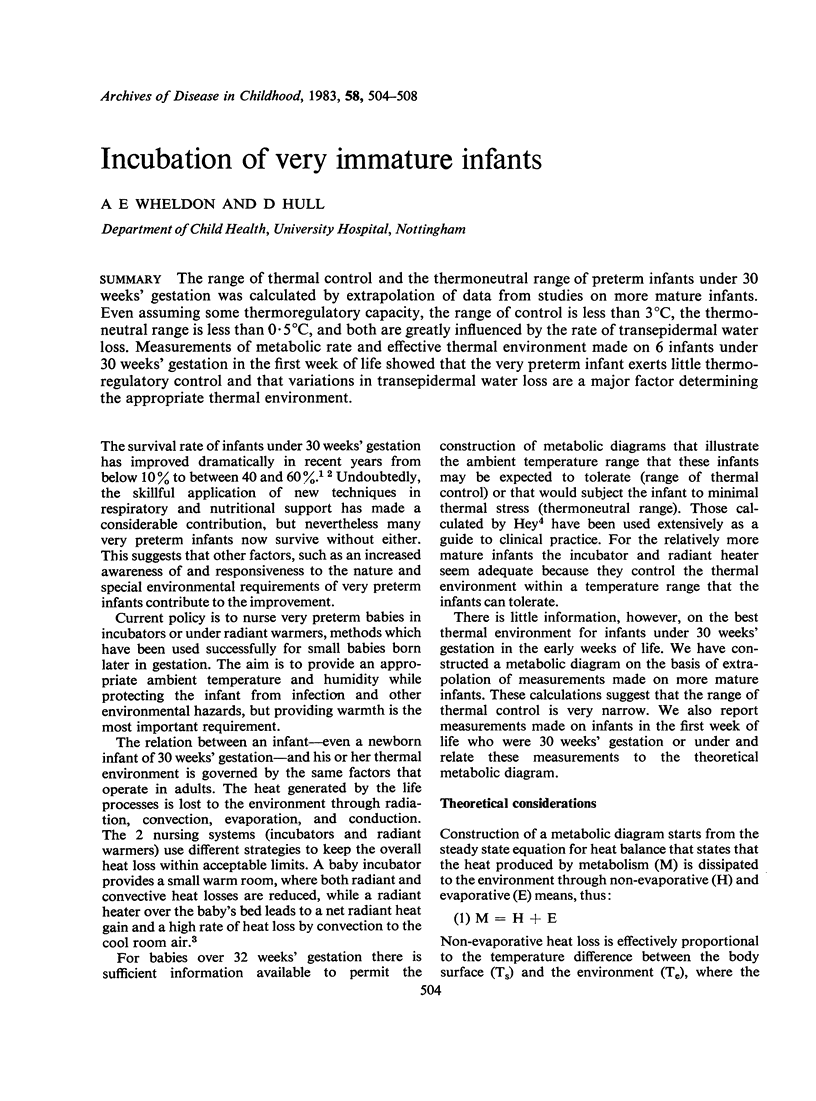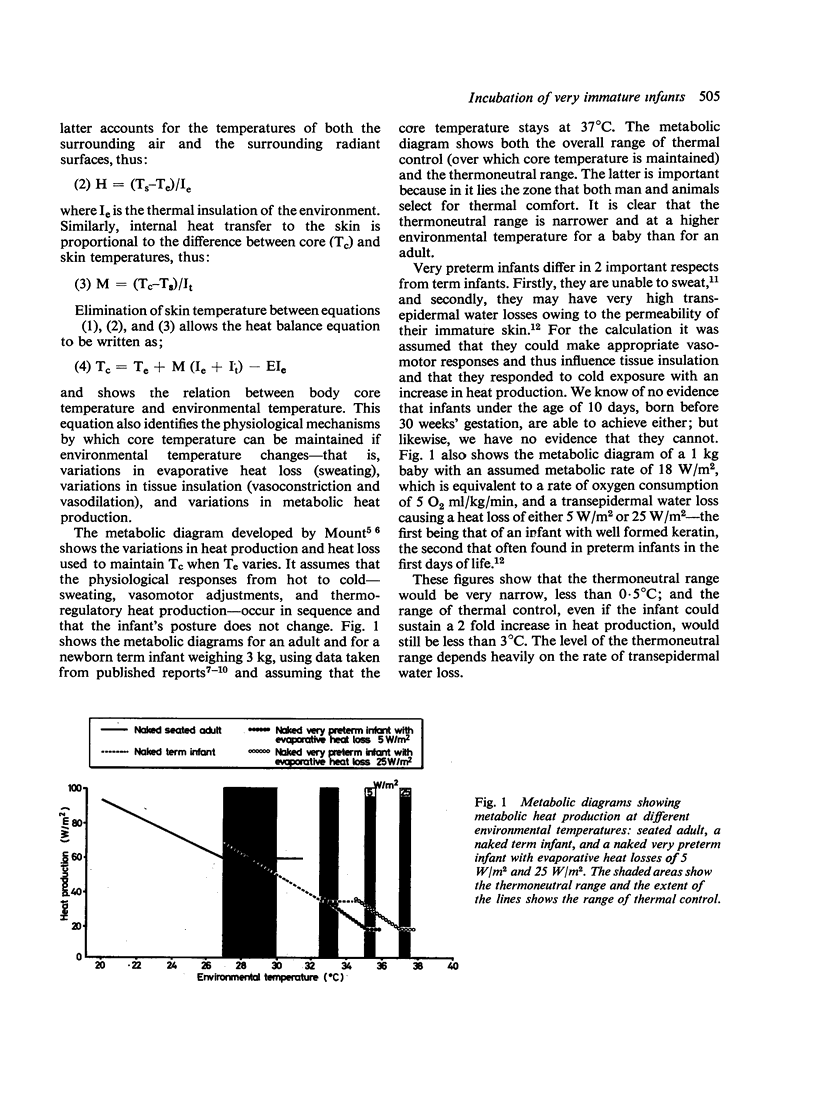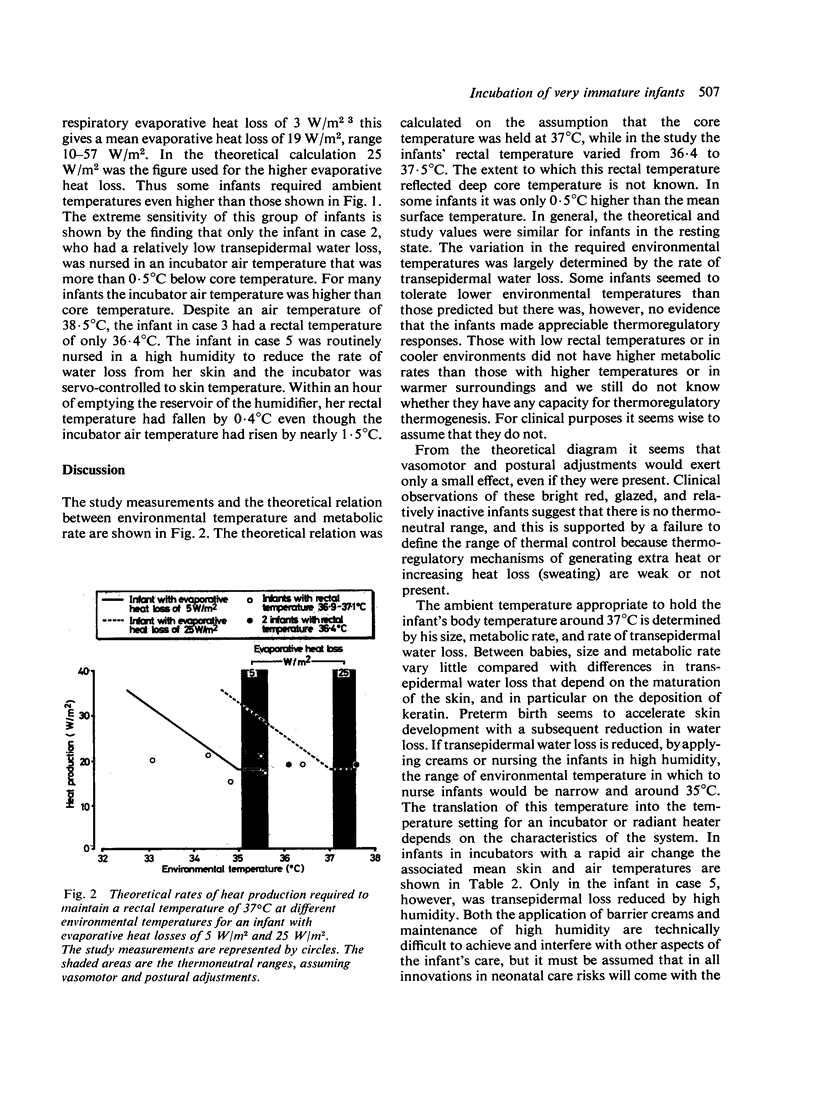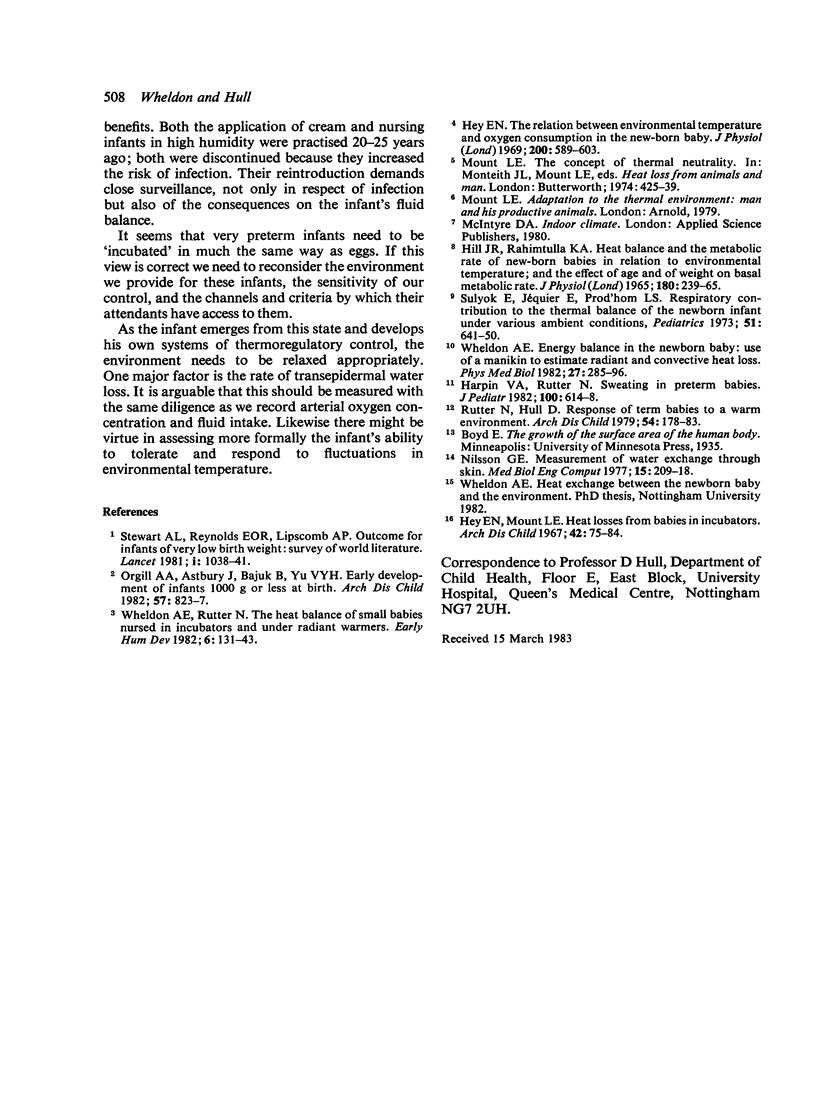Abstract
The range of thermal control and the thermoneutral range of preterm infants under 30 weeks' gestation was calculated by extrapolation of data from studies on more mature infants. Even assuming some thermoregulatory capacity, the range of control is less than 3 degrees C, the thermoneutral range is less than 0.5 degrees C, and both are greatly influenced by the rate of transepidermal water loss. Measurements of metabolic rate and effective thermal environment made on 6 infants under 30 weeks' gestation in the first week of life showed that the very preterm infant exerts little thermoregulatory control and that variations in transepidermal water loss are a major factor determining the appropriate thermal environment.
Full text
PDF




Selected References
These references are in PubMed. This may not be the complete list of references from this article.
- Harpin V. A., Rutter N. Sweating in preterm babies. J Pediatr. 1982 Apr;100(4):614–619. doi: 10.1016/s0022-3476(82)80768-3. [DOI] [PubMed] [Google Scholar]
- Hey E. N., Mount L. E. Heat losses from babies in incubators. Arch Dis Child. 1967 Feb;42(221):75–84. doi: 10.1136/adc.42.221.75. [DOI] [PMC free article] [PubMed] [Google Scholar]
- Hey E. N. The relation between environmental temperature and oxygen consumption in the new-born baby. J Physiol. 1969 Feb;200(3):589–603. doi: 10.1113/jphysiol.1969.sp008710. [DOI] [PMC free article] [PubMed] [Google Scholar]
- Hill J. R., Rahimtulla K. A. Heat balance and the metabolic rate of new-born babies in relation to environmental temperature; and the effect of age and of weight on basal metabolic rate. J Physiol. 1965 Sep;180(2):239–265. doi: 10.1113/jphysiol.1965.sp007701. [DOI] [PMC free article] [PubMed] [Google Scholar]
- Nilsson G. E. Measurement of water exchange through skin. Med Biol Eng Comput. 1977 May;15(3):209–218. doi: 10.1007/BF02441040. [DOI] [PubMed] [Google Scholar]
- Orgill A. A., Astbury J., Bajuk B., Yu V. Y. Early development of infants 1000 g or less at birth. Arch Dis Child. 1982 Nov;57(11):823–827. doi: 10.1136/adc.57.11.823. [DOI] [PMC free article] [PubMed] [Google Scholar]
- Rutter N., Hull D. Response of term babies to a warm environment. Arch Dis Child. 1979 Mar;54(3):178–183. doi: 10.1136/adc.54.3.178. [DOI] [PMC free article] [PubMed] [Google Scholar]
- Stewart A. L., Reynolds E. O., Lipscomb A. P. Outcome for infants of very low birthweight: survey of world literature. Lancet. 1981 May 9;1(8228):1038–1040. doi: 10.1016/s0140-6736(81)92198-x. [DOI] [PubMed] [Google Scholar]
- Sulyok E., Jéquier E., Prod'hom L. S. Respiratory contribution to the thermal balance of the newborn infant under various ambient conditions. Pediatrics. 1973 Apr;51(4):641–650. [PubMed] [Google Scholar]
- Wheldon A. E. Energy balance in the newborn baby: use of a manikin to estimate radiant and convective heat loss. Phys Med Biol. 1982 Feb;27(2):285–296. doi: 10.1088/0031-9155/27/2/009. [DOI] [PubMed] [Google Scholar]
- Wheldon A. E., Rutter N. The heat balance of small babies nursed in incubators and under radiant warmers. Early Hum Dev. 1982 Apr;6(2):131–143. doi: 10.1016/0378-3782(82)90100-1. [DOI] [PubMed] [Google Scholar]


